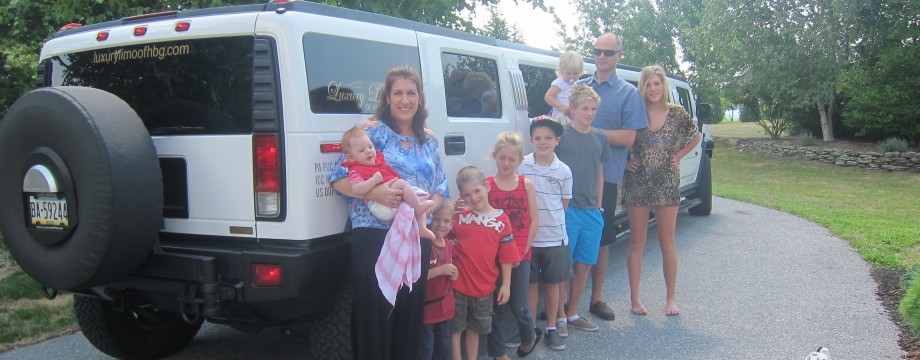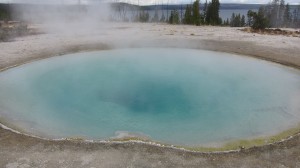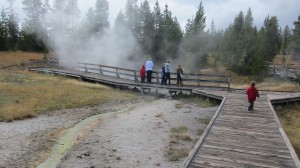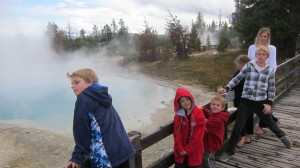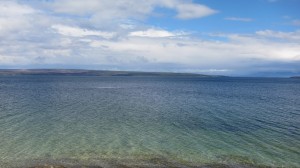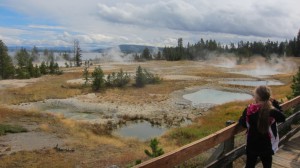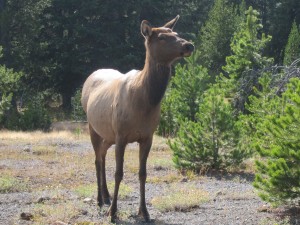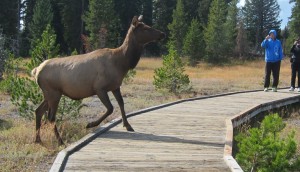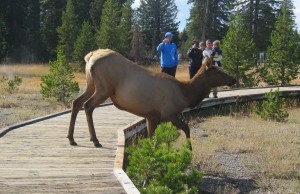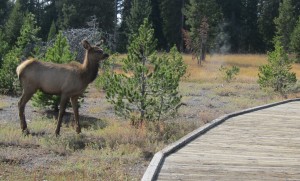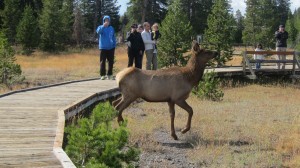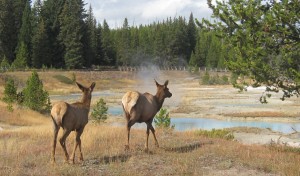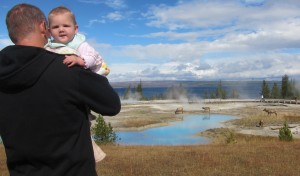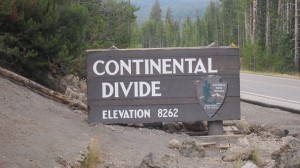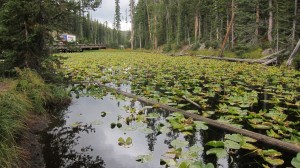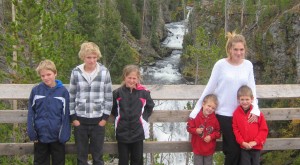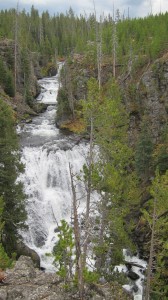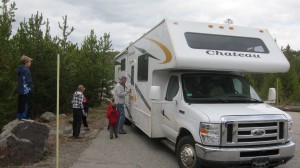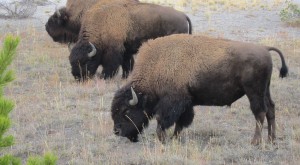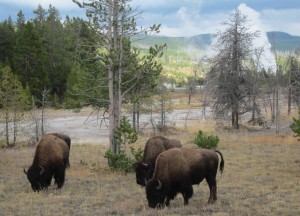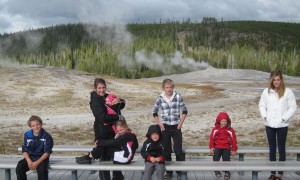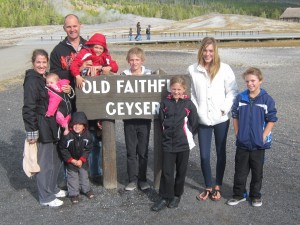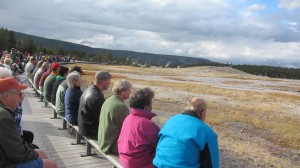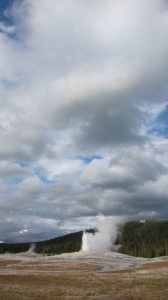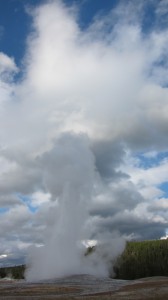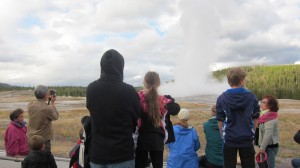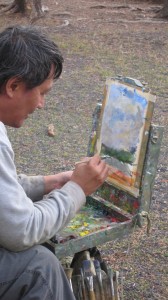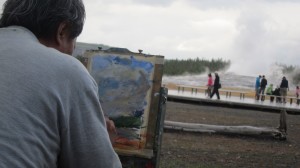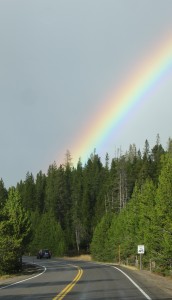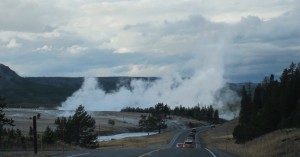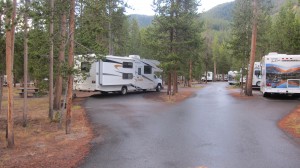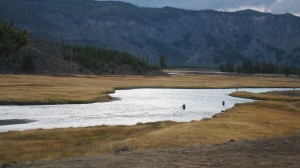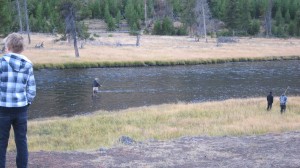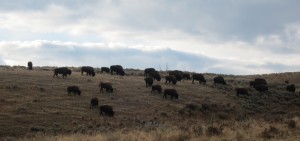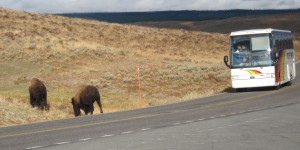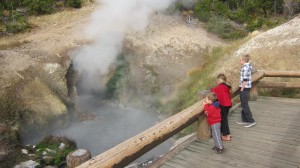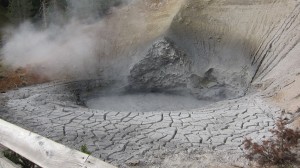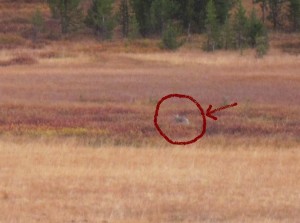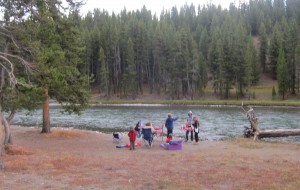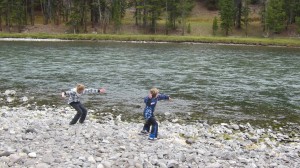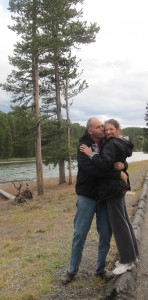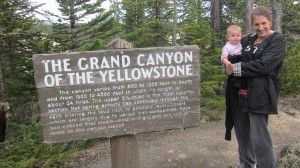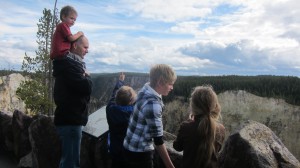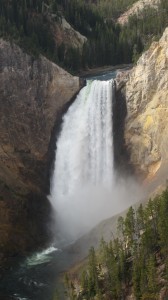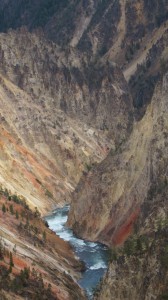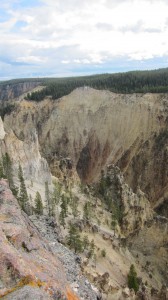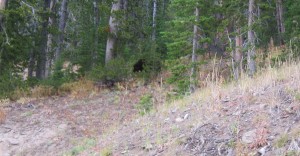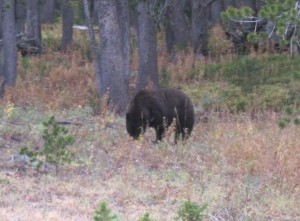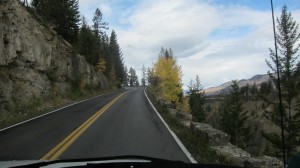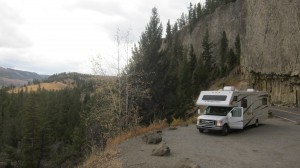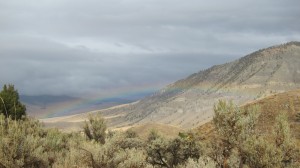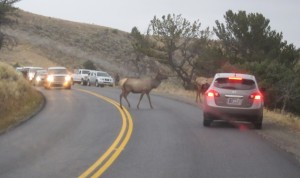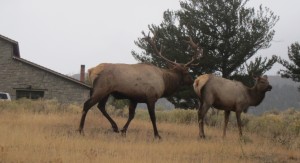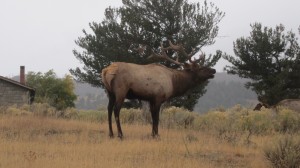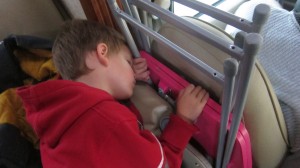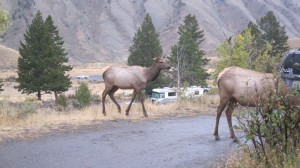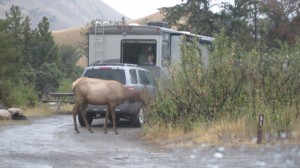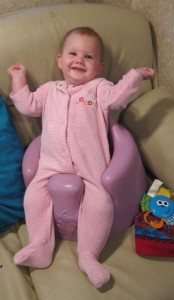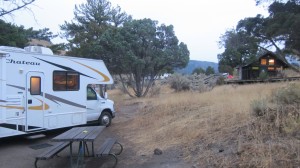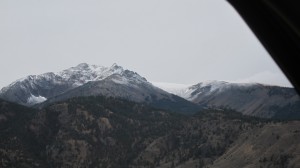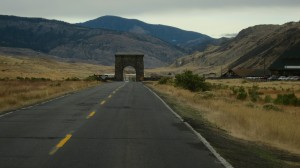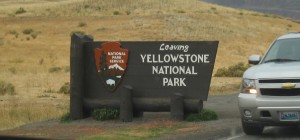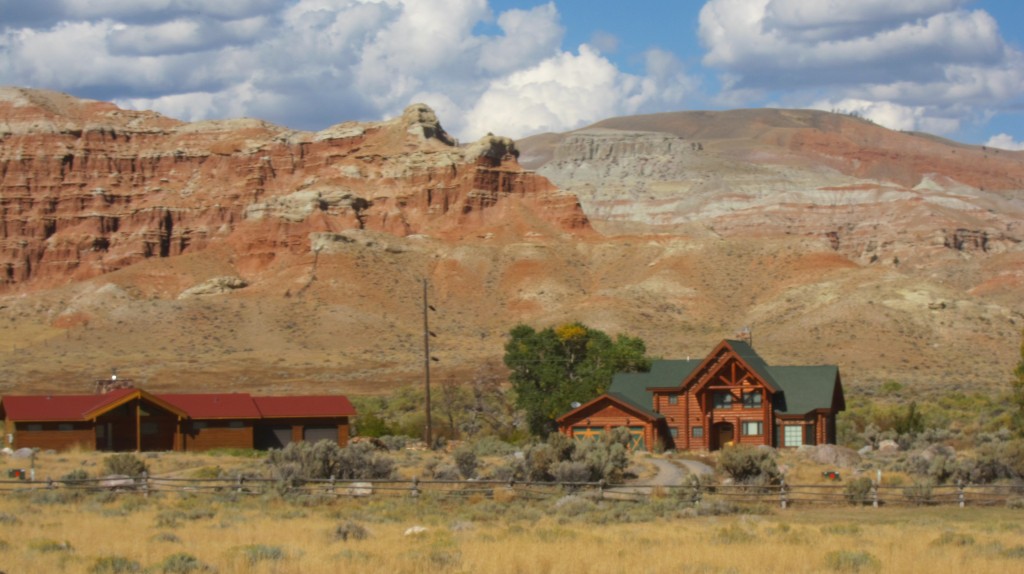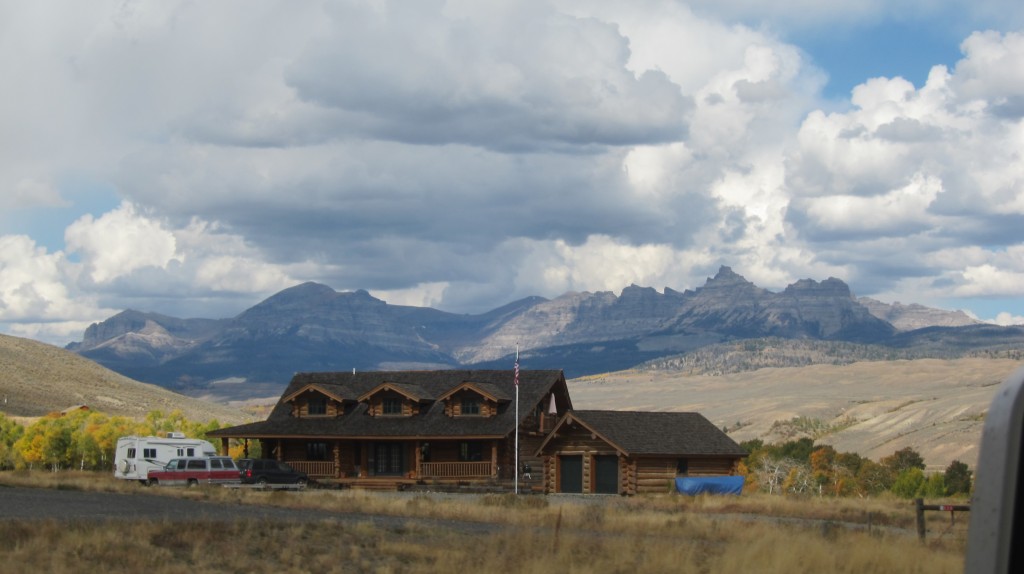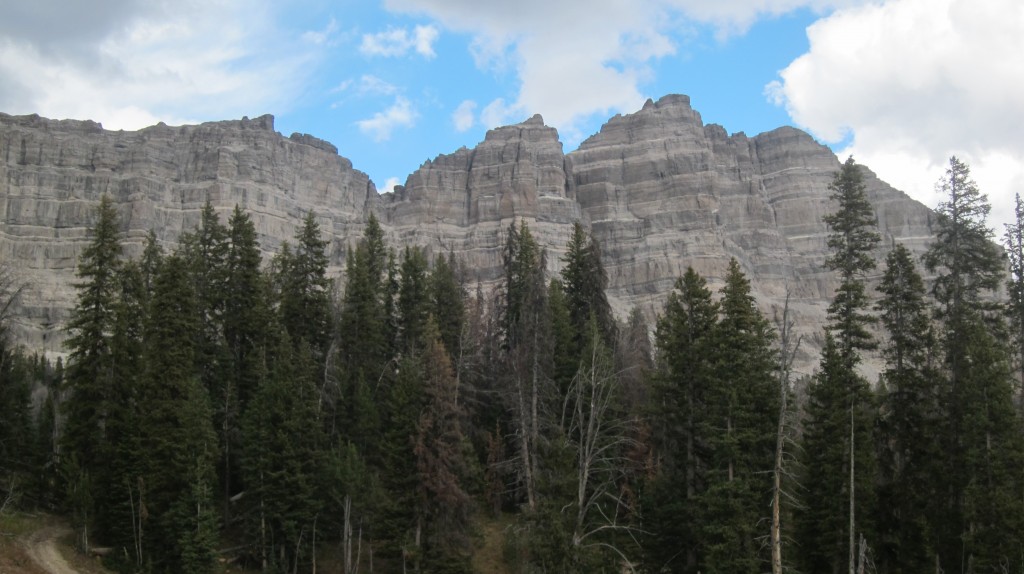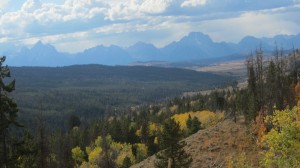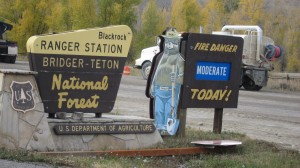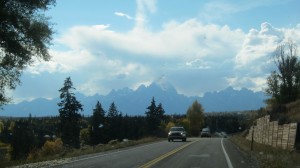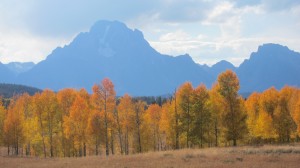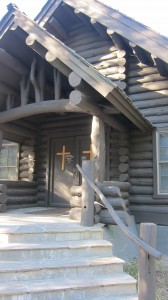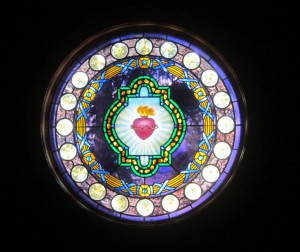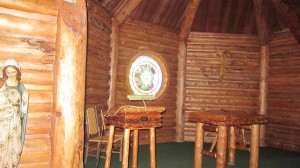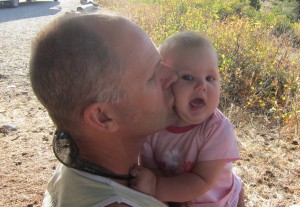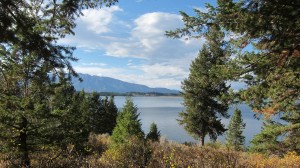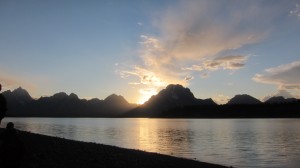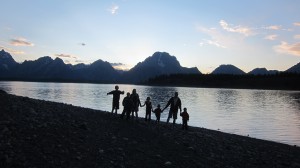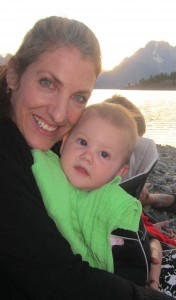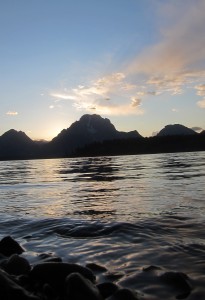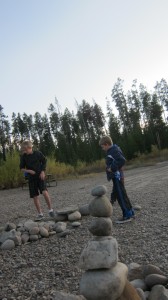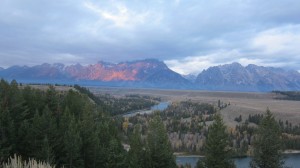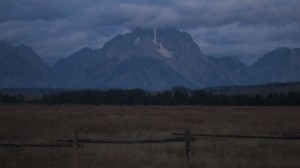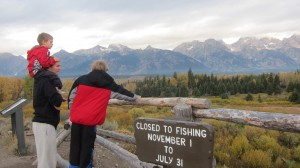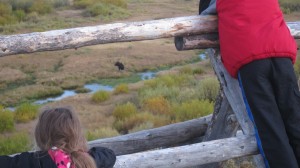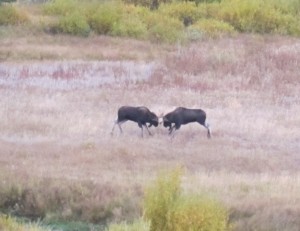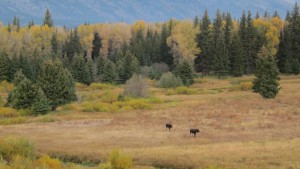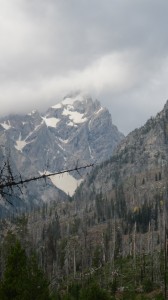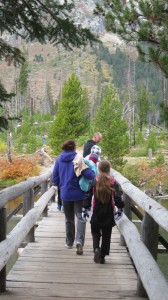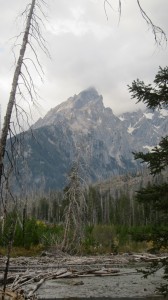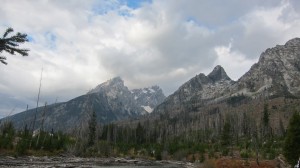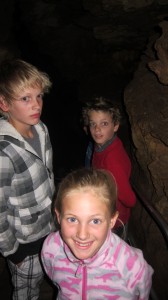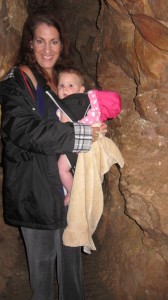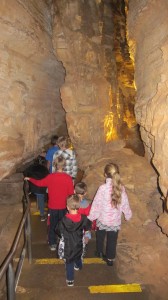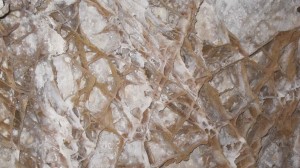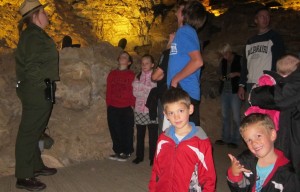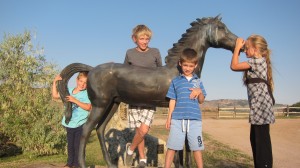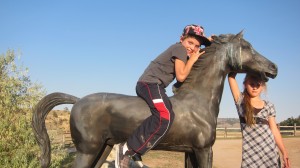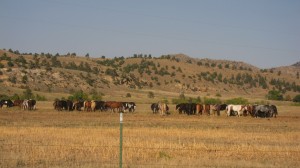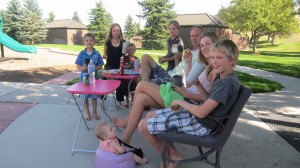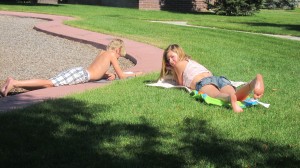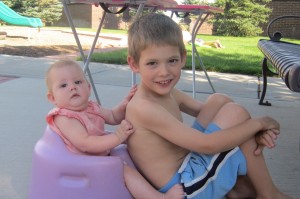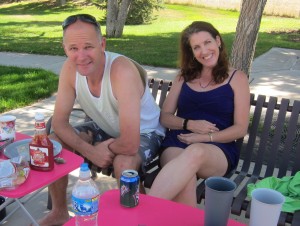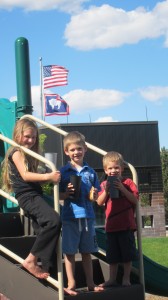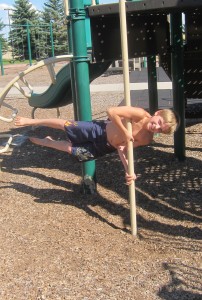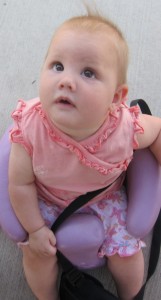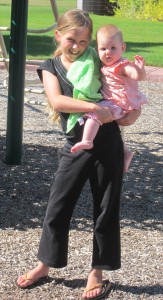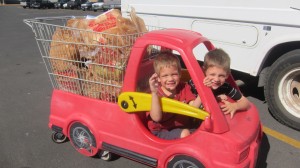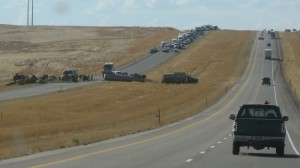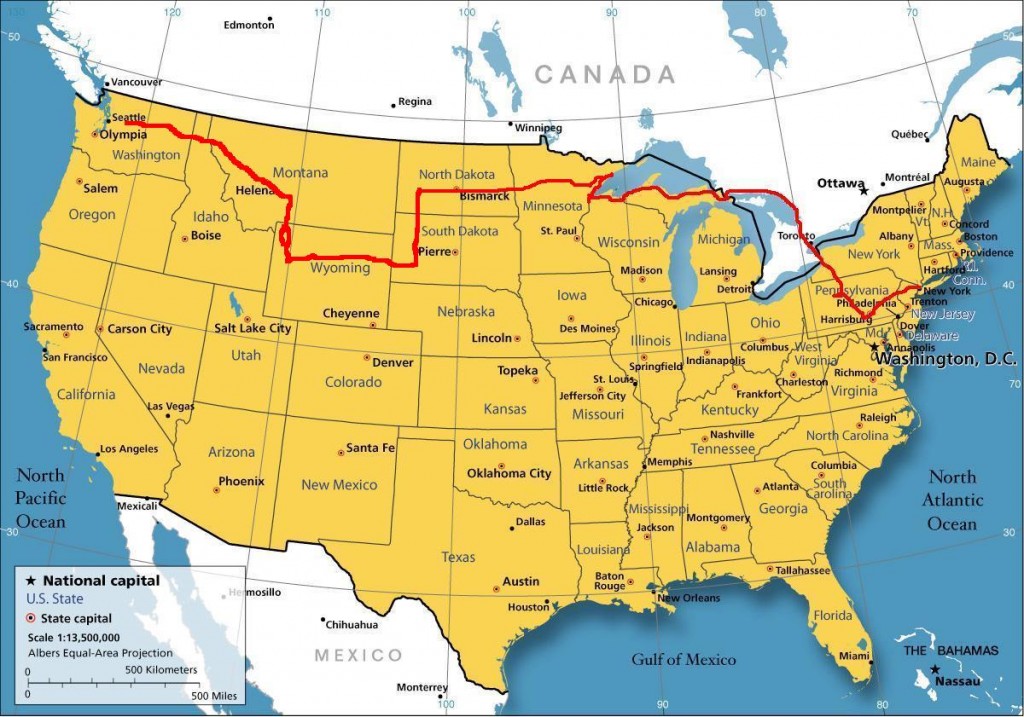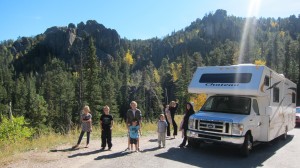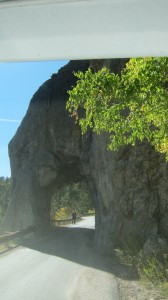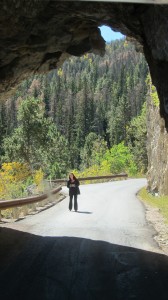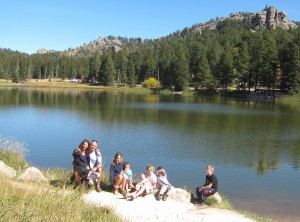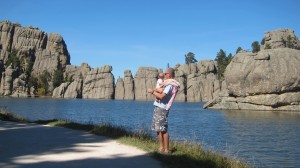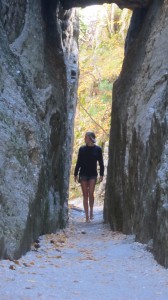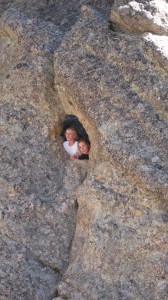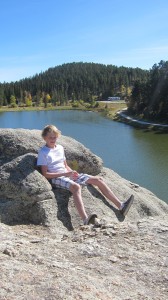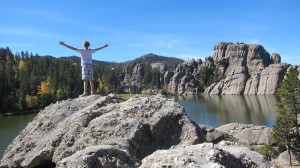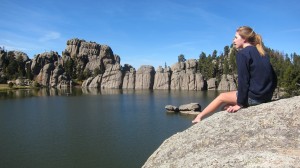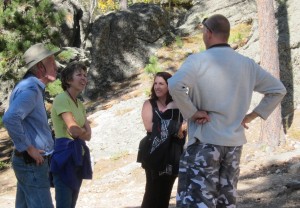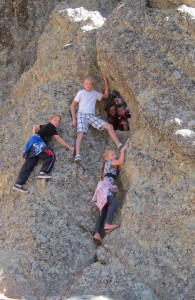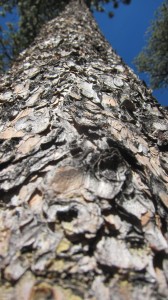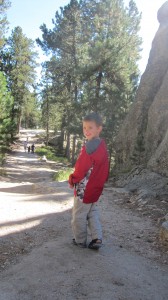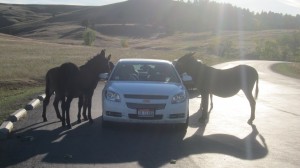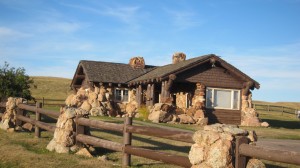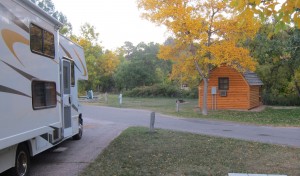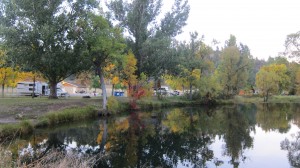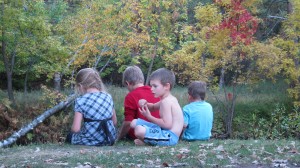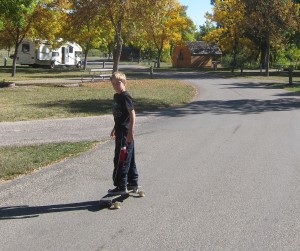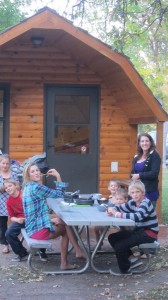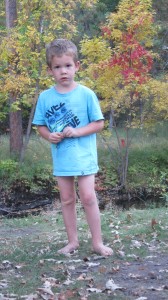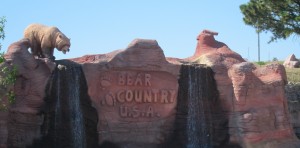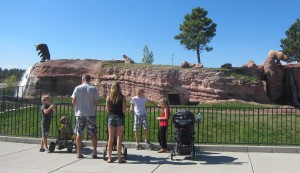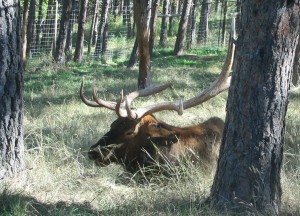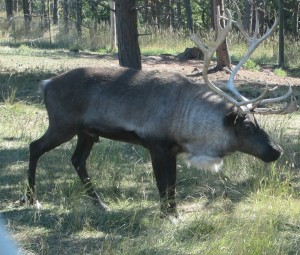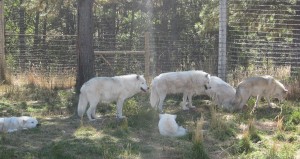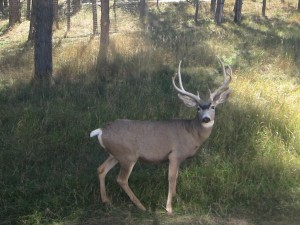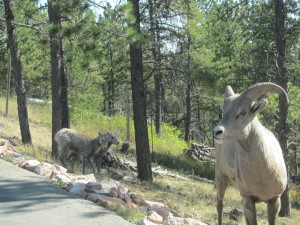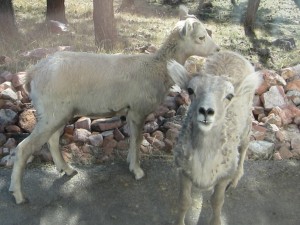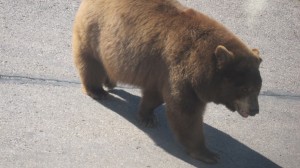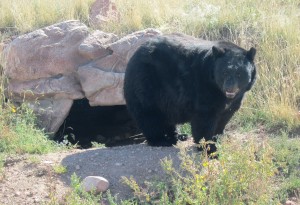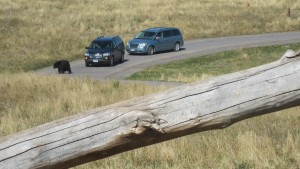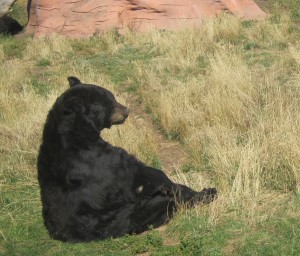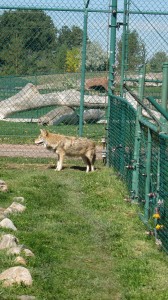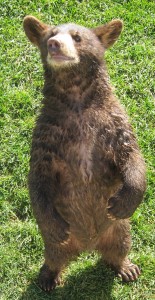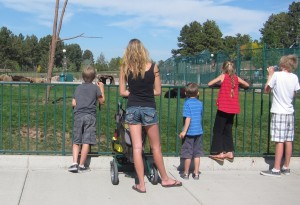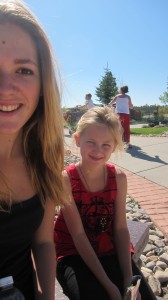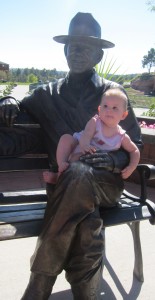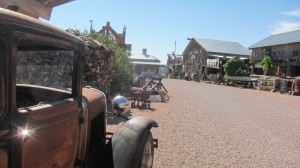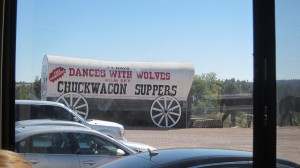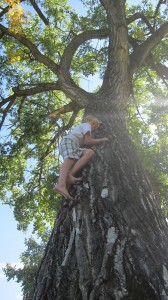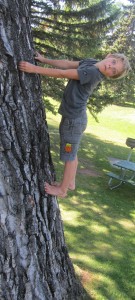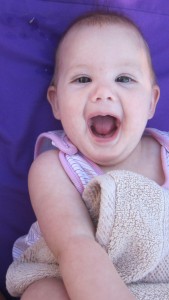Yellowstone National Park is America’s first National Park and includes amazing wildlife, natural hot springs, hundreds of miles of hiking trails, and the world’s largest concentration of geysers.
We entered the park and went on wildlife Loop straight away. We found the West Thumb Geyser Basin. These were the first of many geysers to be seen in Yellowstone. Apparently this exotic thermal feature owes their existence to superheated magma chambers. When the surface water seeps close to the chambers, it heats up and rises, erupting in a variety of ways, from mud pots to bubbling hot springs to spouting geysers and steam vents. It was pretty clear that humans were not to walk close to the geysers because of the hot water and thin crust. But everything was very well set up with boardwalks and information for the excited tourist.
The West Thumb Geyser basin overlooked Yellowstone Lake, the largest lake at high elevation in North America. We were pleased to see some Elk crossing our walkway, then heading down to the Geyser basin.
We travelled on and came across the Continental Divide. (A series of mountain ridges extending from Alaska to Mexico forms the watershed of North America. Most of it runs along peaks of the Rocky Mountains and is often called the Great Divide in the United States).Yellowstone, Glacier and Rocky Mountain National Park lie on the Continental Divide. It is the point where water feeds two different river systems and flows in opposite directions.
There are about 300 waterfalls in the Park. All of the waterfalls were picturesque and worth photgraphing.
As we were visiting the “Old Faithful” Geyser, we saw a herd of bison (buffalo in Oz) or Katanka (traditional Indian name). They were feeding near the Geyser, which we were beginning to discover, attracted a lot of wildlife.
The Old Faithful Geyser was pretty cool. On average, Old Faithful erupts about every 90 minutes and shoots water 135 feet into the air. The Tourist Information centre was set up very well. There were people everywhere, so I’d hate to see how crowded it would be at summertime.
On way out of visiting the Geyser for two hours, we saw an unbelievable rainbow, which I took about 60 photos of. We saw more geysers on the way to our campground for the night at Madison.
Saw more buffalo on the road…a real traffic stopper. Then found the Dragon Cave geyser. The smell was like rotten eggs, so the kids only ventured to it for a short while.
We even saw a coyote due to the keen spotting by Trevor as we drove past some open plains. Coyotes are very shy and don’t often show themselves, so even though it is hard to see the coyote in our photo, we were pleased to get the opportunity to see one in the wild.
We stopped for breakfast by the river. Kids had fun skimming rocks across the surface of the water, whilst I sat with an ever vigilant eye out for a bear that may come ambling out of the forest.
We came across the Grand Canyon of Yellowstone, which was an awesome sight. Apparently it is a former geyser, created by rhyolite lave flows, heat and faulting. Scientists believe that at the end of the last glacial period, melting ice dams at the mouth of the Yellowstone Lake caused catastrophic flooding and erosion that lead to the formation of the canyon as it exists today. The Lower Falls plunge 308 feet into the Yellowstone River. Upper Falls cascades 109 feet into the Canyon. This is the area we saw and we were certainly impressed.
We continued driving, heading towards Dunraven Pass, when suddenly there were cars banked up in front of us. We couldn’t see why until Tev yelled, “A bear…..a black bear!” And so there was, our first bear in the wild……….seemingly oblivious to the commotion it had caused.
Feeling very chuffed with ourselves that we had finally seen a bear in the wild, we continued on the Yellowstone Loop towards our next campsite for the evening. There were still some pretty hairy roads with almost 90 degree drop off, but the spectacular views were worth the trip.
We found our second campsite in Yellowstone called Mammoth Hotsprings Campsite. In the evening, we saw elk crossing through, unperturbed by the number of cars and people stopped for them. There were still signs saying not to get too close as male elk in particular can be very dangerous (especially in rutting season).
Spent an evening playing cards and Monopoly, then left Yellowstone the next day. We drove through the town right near the National Park and continued to see steep hills along the way. We could also see snow that had fallen and settled on the peaks of the mountains……… so we did have snow after all!

